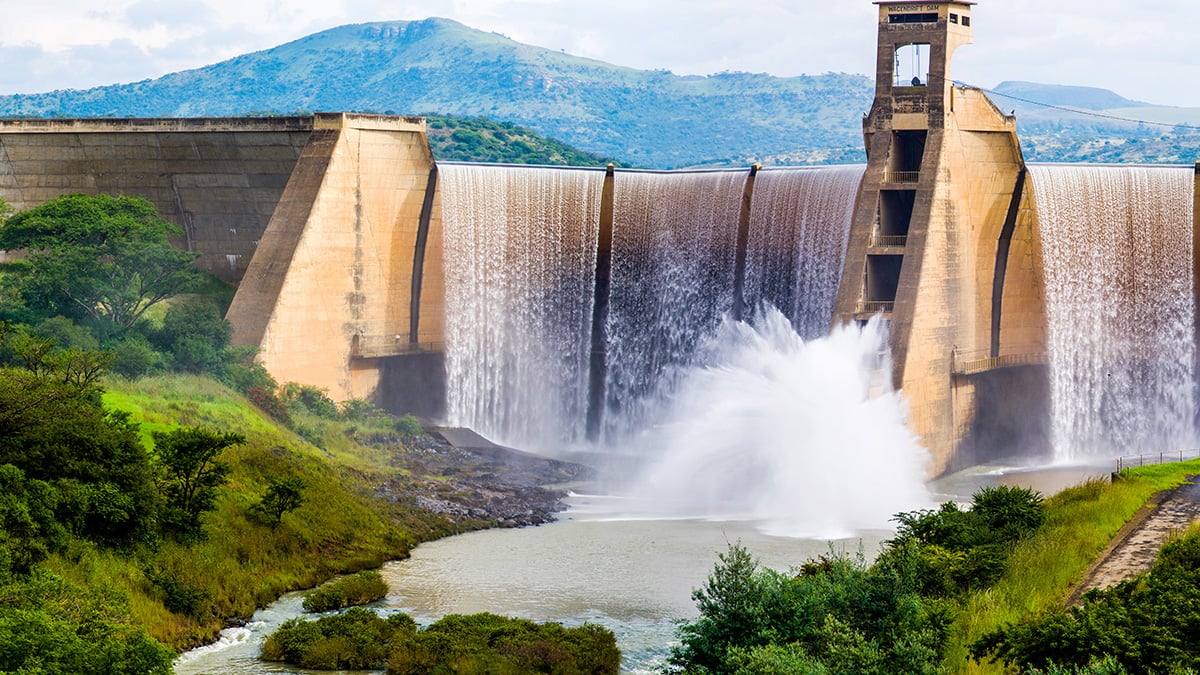South Africa built 1,583% more dam capacity in the 30 years before 1994 than after it

Between 1964 and 1994, the government constructed 14 new dams that can store over 200 million cubic meters of water. Between 1994 and 2024, it only built two.
South Africa is facing severe water problems due to a lack of infrastructure maintenance and a failure to invest in additional infrastructure.
Johannesburg, for example, faces a severe water crisis due to ageing infrastructure, insufficient investment in maintenance and upgrades, and high levels of water losses.
Many smaller towns across South Africa, such as Lichtenburg and Coligny, experience water outages that can last for days.
Mismanagement and corruption have caused significant damage to South Africa’s water system, which affects most citizens.
South Africa is a water-scarce country, which means that the water lost due to leaks and illegal connections is a significant concern.
Ageing and poorly maintained infrastructure contribute to water losses, with some reports indicating that over 40% of water is lost before reaching consumers.
Another problem is that South Africa’s water infrastructure and resources have not kept pace with the country’s population growth.
Many experts have warned that the country’s dam capacity has not kept pace with the rapid population growth over the last 30 years.
A recent report revealed that the government has only added 1.7 million megalitres of dam capacity over the past 29 years, compared to 22 million megalitres from 1964 to 1993.
In comparison, South Africa’s population grew from 44 million in 1994 to 65 million in 2025. The water infrastructure cannot cope with this growth.
In 2023, Former Water and Sanitation Minister, Senzo Mchunu, called for urgent partnership to build new infrastructure and upgrade existing dams to meet growing water demand.
In December 2024, Water and Sanitation Minister Pemmy Majodina unveiled plans to address water scarcity through multiple dam construction projects across South Africa.
However, there has never been a shortage of plans in South Africa. Executing these plans is where the problem lies.
South Africa’s official data about its dams paints a grim picture. The country has significantly slowed its investment in large dams.
According to the International Commission on Large Dams (ICOLD), a large dam is defined as one with a capacity exceeding 3 million cubic meters, equivalent to 3 billion litres of water.
The ICOLD also defines large dams as those with a dam wall that is higher than 15 metres, which is an indication of capacity.
South Africa currently has 282 dams that satisfy these requirements. Of these large dams, 253 were built before 1994, and 29 were built in or after 1994.
Even more concerning is the number of mega dams which were built in South Africa over the last three centuries.
For this analysis, mega dams are defined as those with a capacity of more than 200 million cubic metres of water and a wall height of at least 30 metres.
This translates to a dam with a total capacity of 200 billion litres of water, equivalent to the capacity of 80,000 Olympic-size swimming pools.
South Africa has 20 dams that meet this criterion. Fourteen of these dams were built before 1994, with only two constructed after 1994.
Between 1964 and 1994, South Africa increased its water supply capacity by 30 billion cubic metres.
Between 1994 and 2024, South Africa added only 1.9 billion cubic metres of water capacity to its supply.
The table and charts below show how South Africa’s investment in new dams slowed after 1994.

